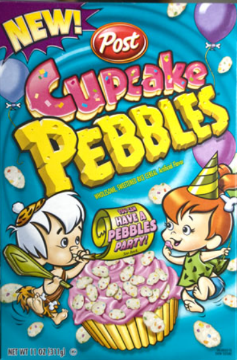I think that Robert Kennedy is a bizarre and problematic choice to be head of HHS. However, I like the idea of reducing the consumption of ultra-processed food.
The term sounds ominous and disgusting – Frankenstein food. I have this mental image of some dirty, disease-laden factory where evil scientists pour one bad-for-you ingredient after another into a vat of “food” that is destined to make its way into the lunches of children dooming them to a future of stunted growth and a bevy of chronic diseases.

For example, right now food scientists at the Post Cereal company are busy cooking up some ultra-processed cereal that is as amazing as their last creation – Cupcake Pebbles. That cereal got a stellar D+ from a nutrition site largely because one serving gives you 46% of your recommended daily amount of sugar.

The term ultra-processed food was first coined by a Brazilian nutrition researcher, Carlos Monterio in 2009. He identified four categories of food that varied by the level of processing. This categorization is called the NOVA system.
Group 1 is no processing and Group 4 is ultra-processed. Not all processing is bad – pasteurization, canning, drying and refrigeration are all “processing.” Ultra means that the food has “five or more industrial ingredients added to the food.”
Getting rid of ultra-processed food may be more complicated than we think.
We should get rid of Cupcake Pebbles, beefy jerky and Twinkies but other ultra-processed foods such as ice cream, potato chips and cheesecake should be protected from elimination because I really like them. I’d be happy to guide HHS on which foods should go and which should stay.
Studies show that 57% to 60% of the average American adult’s diet is ultra-processed food. That’s a lot of entrenched habits to overcome. If you have to choose between Brussel Sprouts and chocolate chip ice cream, you know what the answer will be.
And maybe we should shift our focus from ultra-processed food to foods that have weird additives that cannot possibly be healthy.
| Additive | Source/description |
| Carmine | Derived from crushed cochineal insects and used as a red food coloring. |
| L-Cysteine | Derived from human hair or feathers and used in some baked goods. |
| Propylene Glycol | Commonly used in antifreeze and found in processed foods like salad dressings and cake mixes. |
| Ammonium Sulfate | Often used in wine, sausage casings, and baked products and is commonly used as a lawn fertilizer |
| Castoreum | Derived from the secretions of beaver castor glands located near the anus, used as a flavor enhancer in foods like vanilla-flavored products. |
| Shellac | Obtained from the secretions of the female kerria lacca bug, shellac is used as a glazing agent on some candies, pills, and fruits. |
Next time I am at a restaurant I may say, “I don’t need a menu of gluten free items. But I would like a menu of Carmine and Shellac free items. And I don’t want to eat any bug secretions. Also, no Twinkies.” I’ll see what reaction I get.
